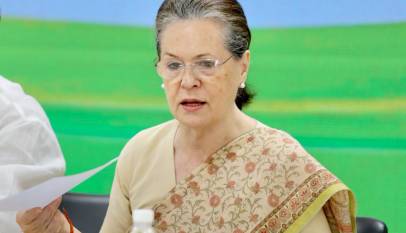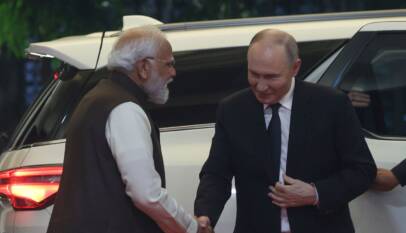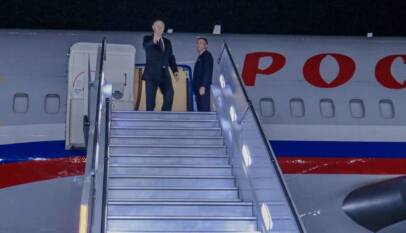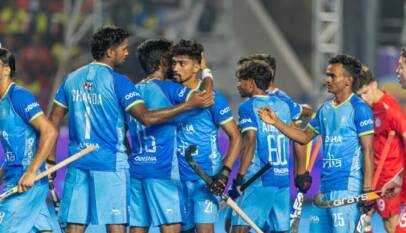MMR Region as a Powerhouse for ‘Developed India’: Chief Minister Eknath Shinde
Immediate Aid for Belapur Building Accident Victims: Chief Minister Eknath Shinde Directs Navi Mumbai Municipal Commissioner
Urban Development and Infrastructure to Attract Investments
Mumbai : Mumbai Metropolitan Region (MMR) is set to play a crucial role in realizing India’s dream of a five trillion-dollar economy. To accelerate ambitious infrastructure projects in this region, priority must be given, directed Chief Minister Eknath Shinde.
The MMR region is poised to become a “powerhouse” for the economy in 2047, as part of a developed India. Chief Minister Shinde expressed confidence that major investments would flow into Maharashtra to boost transportation, sustainable urban development, and infrastructure projects.
In terms of urban development, the projects within the MMR region are being categorized into “Platinum” and “Golden” projects.
Platinum Projects
The Platinum projects include the Atal Setu (Mumbai Trans Harbour Link), the development of three tourism areas—Alibaug, Gorai, and Madh—and the creation of industrial cities at Khardi Integrated Logistics Park, Anagav-Sape, Vadhavan, and Dighi.
The Atal Setu project has been completed. Investments will be made to create world-class tourism facilities in Alibaug, Gorai, and Madh. A Greenfield Industrial Park will be developed on 248 hectares in Khardi, Vasai, potentially attracting investments worth $560 million.
Industrial cities will be developed at Anagav-Sape, Vadhavan, and Dighi, positioning them as high-growth industrial hubs. This is expected to bring in investments of around $1 billion across these three locations, fostering manufacturing and generating significant employment opportunities.
Golden Projects will include 12 township projects under the NAINA authority, the Mumbai-Pune Highway Service Lane, the Goregaon-Thane Tunnel, the Sinhagad Road Development Project, public transportation projects, maritime, aviation, and railway infrastructure projects, ambitious road transportation projects, the Mumbai-Ahmedabad Bullet Train, and integrated riverfront development projects.
MMRDA will plan affordable housing projects at 12 locations under the NAINA authority within the Navi Mumbai International Airport influence zone, providing housing as per demand for a large population.
A six-lane service road will be constructed along both sides of the Mumbai-Pune Expressway, reducing the increasing traffic load. The Goregaon-Thane Tunnel and the Sinhagad Road Development Project will enhance connectivity to key development areas.
Robust Public Transportation Network
With ambitious projects like the Coastal Road Metro and Metro Line 5, public transport will see major improvements, with a provision of around $1.27 billion.
Bus Rapid Transit System (BRTS)
Modernization of Mumbai’s bus services will include adopting this concept, aiming to transport an additional 200,000 passengers by 2031.
Investments will be accelerated in maritime, aviation, and railway infrastructure.
Port Development
Plans are in place to enhance port facilities at Jawaharlal Nehru Port Trust, Vadhavan Port, Dighi, and Rewas, which will boost international trade.
Aviation
With the start of operations at Navi Mumbai International Airport (involving a $200 million investment), the load on Chhatrapati Shivaji Maharaj International Airport will decrease, mitigating pollution and other issues. Additionally, Chhatrapati Shivaji Maharaj International Airport will be expanded by 2032, increasing passenger capacity by an additional 60 million annually.
Ambitious Road Development Projects
Massive investments will be made in projects like MTHL, Hindu Hriday Samrat Balasaheb Thackeray Maharashtra Samruddhi Mahamarg, Dharmaveer Chhatrapati Sambhaji Maharaj Coastal Road, Vadodara Highway, and Bharatmala Pariyojana Phase 3.
Bullet Train
The Mumbai-Ahmedabad High-Speed Rail Corridor will connect two of the country’s key economic cities.
Integrated Riverfront Development Project
MMRDA has planned to rejuvenate rivers like Mithi and Oshiwara. Following the Namami Ganga model, these areas will be developed as tourist and recreational zones, while also implementing measures for environmental preservation.
Considering the projected increase in India’s urban population, it is essential to meticulously plan urban and infrastructure facilities in the MMR region. Approximately $16.4 billion in investments across various sectors and facilities are being emphasized, potentially creating significant employment opportunities.
The NITI Aayog recently released a report supporting this, indicating that the MMR region will indeed become a “powerhouse” for a developed India.
“Constitution Of Every Indian Is Under Threat”, says Rahul Gandhi after paying tribute to Dr Babasaheb Ambedkar on Death Anniversary.
New Delhi; December 2025: Leader of the Opposition in the Lok Sabha Rahul Gandhi on Saturd…




















